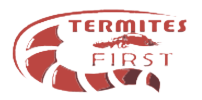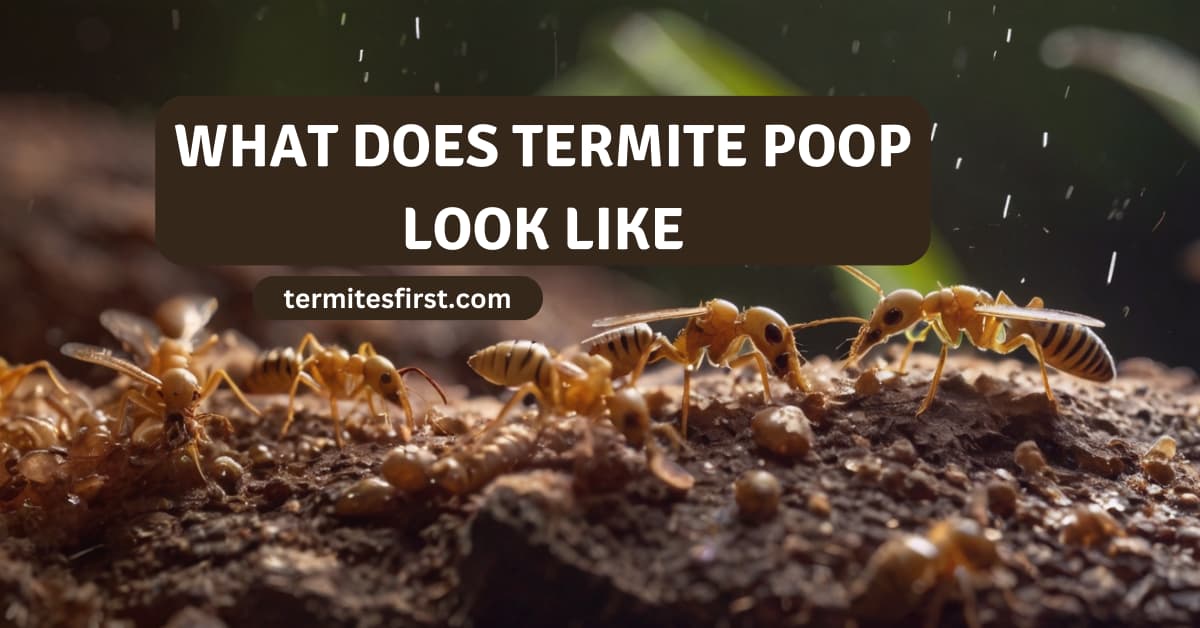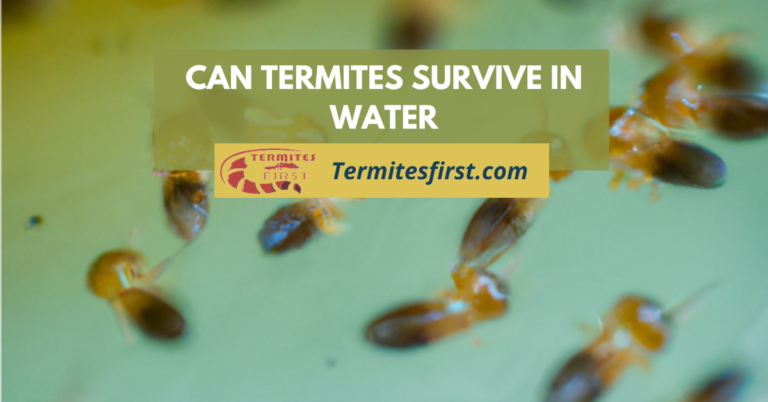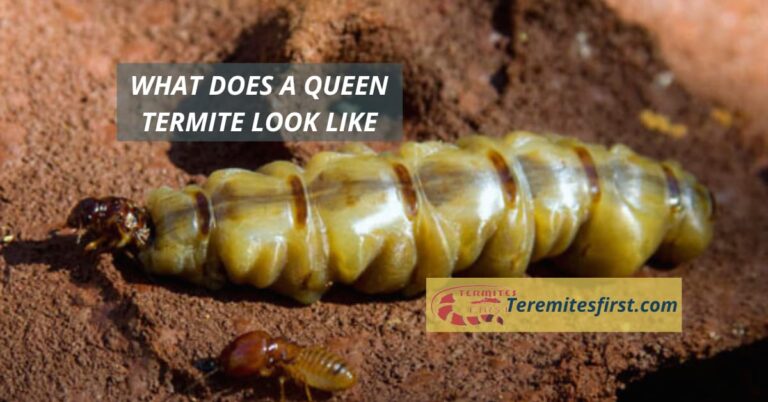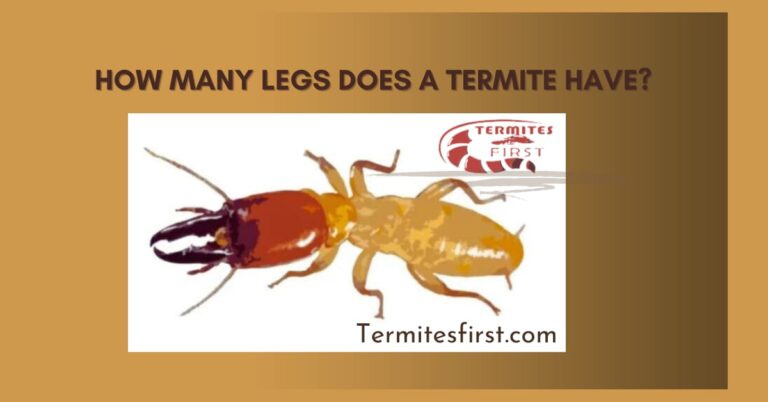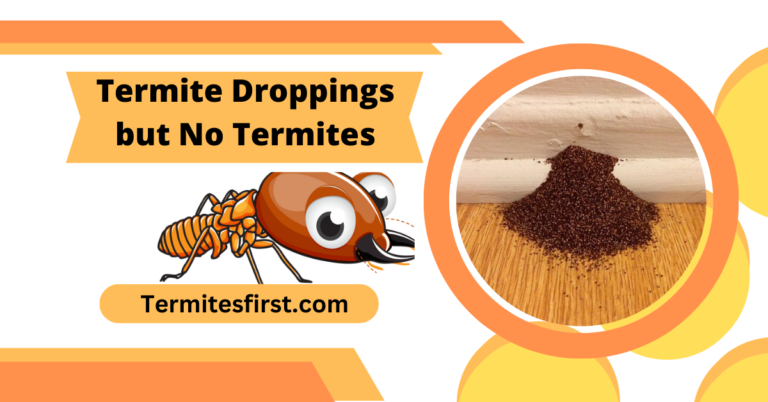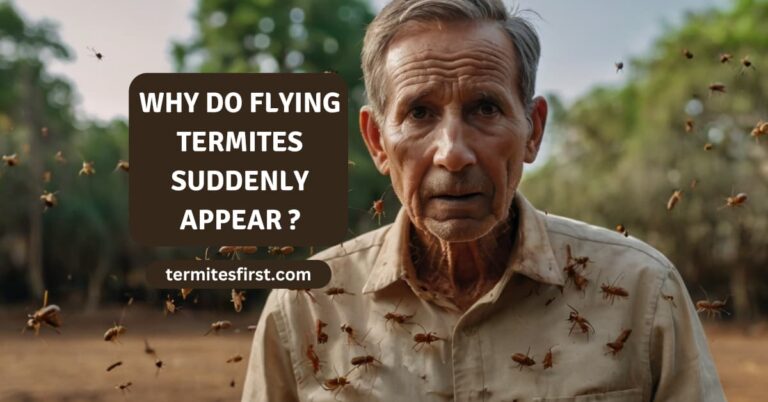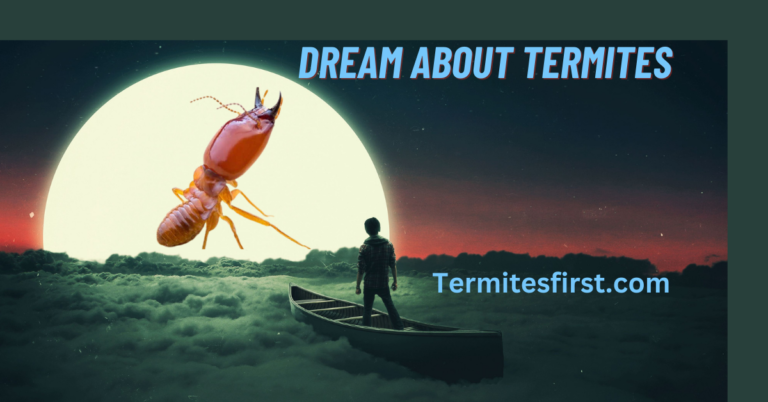What Does Termite Poop Look Like?
Knowing what termite poop looks like is crucial to recognizing termite activity. Termite poop, or frass, looks like little wood-colored pellets, usually in small piles. These pellets are approximately 1/25 inch long that can be confused with sawdust.
Identifying these clues allows for quicker detection and more effective treatment of a termite invasion. Understanding the biology and behavior of termites is essential for homeowners and pest control professionals. This knowledge helps protect structures and keeps properties healthy and safe.
Main Insights:
- If you spot termite droppings Termite droppings, or frass, look like small, hard pellets. They originate from digested wood and are shaped and sized according to the species of the termite. Identifying these telltale signs is key in effective pest management.
- Termite poop is one of the first identifiers of an infestation, even when termites are not seen. This important finding must lead to swift action to protect from further harm.
- Termite poop is usually less than 0.04 inches. They are often mistaken for other pests because they can resemble little grains of sand and they crumple easily, similar to coffee grounds.
- A close eye is the best way to tell termite poop from ant poop. Keep in mind, ant droppings would be much smaller and not as smooth.
- Both drywood and subterranean termites make different kinds of frass. Drywood frass is commonly seen in small piles underneath exit holes, while subterranean frass can be found combined with dirt.
- Homeowners need to take a close look at any suspicious sawdust to see if termites are at work. Deal with an infestation today and prevent tomorrow’s infestations today with the right products!
What Are Termite Droppings
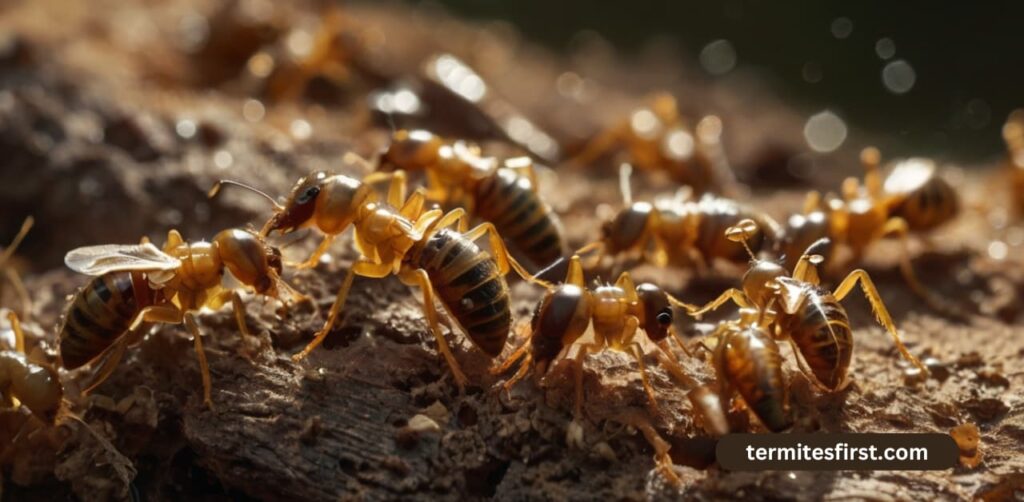
Termite Excrement Defined
Termite droppings, more commonly known as frass, are the excrement left behind by these wood-consuming pests. These are dark, small, hard pellets produced from the digestion of wood. What does termite droppings look like? They only usually get up to about 0.04 inches long at most.
These pellets can be anywhere from a light brown to a dark black color. They have an oval shape with six concave sides and rounded ends. To many, these droppings may look like coffee grounds or sawdust, but they’re obviously very hard and dry.
Usually these 1mm pellets will appear as little mounds of salt or pepper sprinkled about. Knowing what termite droppings look like can help you get the most effective pest control. By learning what termite droppings look like, homeowners and pest control professionals alike can identify an infestation and act quickly.
Early identification is key to avoiding costly damage.
Importance in Detecting Infestations
Identifying termite droppings is one of the best signs to look for to know if you have a termite infestation. These droppings can be present without the termites being seen, which usually indicates hidden, internal damage.
The truth is, often the only real evidence of termite activity is what is hidden inside wooden structures, and droppings are one of the most visible signs. These pellets are a sign that an active termite colony could be lurking near your home.
Without visible signs, they might be quietly eating through the structural wood members of your house. This is a very scary scenario. Termites are responsible for more than $1 billion in damages annually in the United States.
Statistics show that over one in five homes in the U.S. Will experience a termite infestation at some point. This is why awareness and early detection are so important. If you find termite droppings in your house, you need to act fast.
Taking care of the problem as soon as you discover it will help stop the damage and avoid expensive repair costs. If you find termite droppings, you have a big problem. If you let them go, you are looking at extensive and expensive structural damage down the road.
Identifying Termite Droppings
Termite droppings, or drywood termite pellets, are a more discreet yet revealing sign of a termite infestation. To effectively identify these visible droppings, there are some common characteristics to consider.
- Size: Typically no larger than 0.04 inches.
- Color: Ranges from light brown to black.
- Shape: Oval with six concave sides.
- Texture: Hard and resembles coffee grounds.
Appearance and Characteristics
Termite droppings are very small, rarely larger than the size of a grain of sand. Their color can be anywhere from light brown to black. This results in a wide range of colors that frequently varies based on what wood they’re eating.
The droppings become oval in shape, characterized by six concave sides and rounded ends. This distinctive form distinguishes them from other waste. Their texture is very hard and dry, more akin to coffee grounds or fine sawdust.
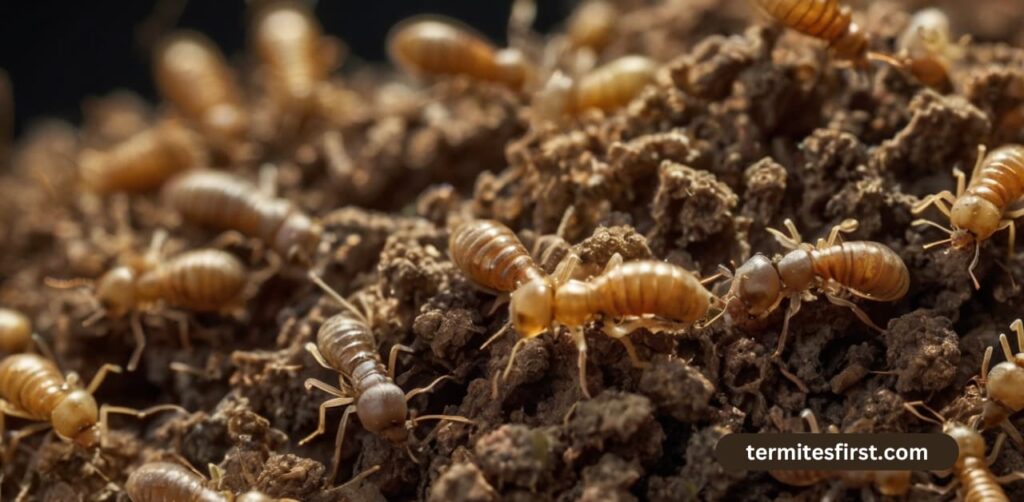
This unique texture can be misleading, as it causes a lot of folks to misidentify termite frass as common household dust. Understanding these features is key to knowing whether termites are present.
These droppings may be the only visible sign of drywood termites, as they are able to live entirely within the wood they infest.
Differences Between Termite and Ant Droppings
Though termite and ant droppings might look alike at first sight, their differences are notable and important to recognize. Termite feces are noticeably larger, reaching 0.04 inches, and have a more distinct oval shape with concave sides.
In comparison, ant droppings will be much smaller and might not have the same organized shape as termite frass. Additionally, the texture of ant droppings is usually not as dense as that of termites.
With a little careful observation and a discerning eye, you’ll be able to tell the two apart. This skill helps them best identify pest problems and take the appropriate action to fix them.
Termite Frass Compared to Sawdust
For one thing, termite droppings can be easily confused with sawdust. If you take a closer look, termite droppings have very unique features.
Contrary to normal sawdust, which is typically fluffy and soft, termite droppings are more difficult and compact. This is an important distinction that homeowners need to keep in mind when inspecting piles of possible sawdust.
Sadly, approximately 80% of termite damage is not detected until it is too late. That’s why it’s important to identify termite droppings as soon as possible.
These droppings are commonly found in mounds and range in color. So it’s important to check them carefully for evidence of termites. Identifying termite droppings is the first step to getting rid of termites before they do any serious damage.
Variations Among Termite Species
Discovering the hidden world of termite droppings is an exhilarating adventure. You can view the surprising variations among termite species in the frass, or droppings, they produce. We know, we know—this isn’t the most glamorous topic, but it’s incredibly important. Knowing these differences can help you best address a pest issue in your home.
I want to focus on the two most common culprits in your area: drywood termites and subterranean termites. Each one has its own distinctive frass characteristics that tell a story of their existence.
Drywood Termite Frass Features
Drywood termites make their presence known in a unique fashion. The frass they leave behind is pretty telling, too. It’s six-sided, oval-shaped little pellets that look like miniature mounds under what are called kick-out holes.
The droppings are often a light brown to a dark brown in color. This modification in color will vary based on what kind of timber the termites have been eating. You’ll see them most commonly in small, tidy piles around exit holes in the wood.
This is an important detail. Their droppings may be the only visible indication of a drywood termite infestation, as these pests often spend their whole lives inside the wood they infest. Thus, knowing these characteristics can greatly help to spot a drywood termite issue before it escalates into something bigger.
Subterranean Termite Frass Traits
Subterranean termites exhibit unique frass characteristics that distinguish them. Their droppings usually get incorporated into soil and debris. Consequently, they get a bit messier and more difficult to detect compared to drywood droppings.
While they don’t produce those neat little droppets, they do still leave definitive clues. Watch for mud tunnels or swarmers to easily identify them. These features underscore the need to recognize the unique features of subterranean termite frass.
Recognizing these indicators as soon as possible can be key in avoiding an adult infestation.
Color Differences in Frass
It’s interesting to mention, termite frass may be various colors depending on which species you are dealing with. To make things clearer, here’s a simple comparison:
| Termite Species | Frass Color |
| Drywood Termites | Light to Dark Brown |
| Subterranean Termites | Mixed with Soil and Debris |
The color of the frass will vary quite a bit depending on what kind of wood they’re eating. This variation can complicate efforts to identify the main species at issue.
Identifying any termite droppings is truly the first step to dealing with the issue before it gets out of hand. It may be challenging to distinguish between old and new droppings, but knowing what to look for is half the battle.
Locations and Detection
Common Areas for Termite Excrement
In my experience, detecting termite droppings takes a degree of skill and an understanding of frequent hiding spots. Termite droppings, more commonly known as frass, usually build up at sites where they are presently eating. This can lead to detection being very difficult, particularly in homes built before lead was banned, like my home in Santa Maria.
In New Jersey, the eastern subterranean termite is the most economically important pest. It almost never deposits frass, which means it is very hard to detect an infestation. Today, I still vividly recall visiting my old home and discovering these small mounds around wooden pillars.
These droppings are typically in the form of small pellets. You may spot them near baseboards, window sills, or any wood surfaces that termites have infested. Droppings in some instances may be dispersed over an area several feet square, showing a more widespread infestation.
What I learned is that roughly 1% of the time, if you look, you can find these droppings close to nesting sites. This exceptional discovery provides an important clue.
Identifying Droppings in Homes
Finding termite droppings in your home is no small feat. From my own experience in a two-story, 1972 vintage home I’ve learned that droppings can be deceptively inconspicuous. Believe me, if you don’t know what you’re looking for, they can be difficult to detect!
The frass looks like small wood-colored pellets and can be easily confused with sawdust or other debris. What I have noticed is that these pellets often force their way out through very small holes in the wood. This process creates little mounds or piles.
In Yukon, Oklahoma, where I now live, just finding someone who knows how to inspect these signs can be a challenge right off the bat. Knowing that these droppings are a definitive indicator of termite presence has put me in control.
A flashlight to look into dark corners and crevices goes a long way. Whatever the reason, it certainly helps me detect those pest signs early on with little effort.
Assessing Freshness of Droppings
Determining the age of termite droppings can help determine how active an infestation is. Recently produced frass is typically more tan in color and can be a little tacky or damp if you happen to touch it! As time goes on, the longer it sits, the drier and darker it will get.
In my historic home, I’ve found the initial droppings where they’re most noticeable next to older, more established mounds. This stark contrast can reveal current activity and pinpoint areas where termites are currently feeding.
I’ve found that making a point to thoroughly inspect areas on a regular basis really helps spot fresh droppings quickly. This is critical in high-risk locations such as basements and attics.
Understanding these slight distinctions has been key in treating subterranean termites successfully.
Managing and Preventing Infestations
Termite infestations are a stealthy threat that is hazardous and can lead to significant devastation to homes. Each year in the U.S., these invasive pests cause more than $1 billion in damages. Identifying termite droppings at the first signs of activity is key to stopping a potential infestation from growing and saving homeowners from expensive damages.
Here are the steps to manage and prevent these infestations safely and effectively.
Steps to Remove Termite Droppings
First, knowing how to spot termite droppings is the key. These droppings, or frass, look like little mounds of sawdust or coffee grounds. You can spot termite droppings under or near wooden structures, as termites eat wood, digest it, and pooh out the indigestible residue.
Once you’ve identified them, your first line of action should be to clean up the droppings. Vacuum up the frass, being sure to get deep into any nooks and crannies where droppings could have built up. This is why it’s imperative that you wear a mask and gloves while sanding to prevent inhalation of particles.
After cleaning, open and closely inspect the surrounding wood for signs of damage. Check for hollow-sounding wood or blistered surfaces, which can be a sign of termites. If your property has sustained significant damage, it’s best to call in a professional pest management company. They are in a better position to thoroughly inspect the situation and make the appropriate treatment to remedy the infestation.
Preventive Measures for Homeowners
Termite infestations are preventable, but only through awareness, prevention, and non-chemical treatments. Start with moisture prevention. Termites love a damp environment, so start by making sure that moisture levels in and around your home are low.
Repair any dripping pipes or faucets, and make sure there’s proper drainage away from the home’s foundation. Proper ventilation in crawl spaces and attics is important to help reduce humidity in the home.
Eliminate any wood debris or mulch that comes in contact with your home’s foundation. This is the best line of defense to keep your home safe. This can include commodities like firewood, lumber, and even wooden fences.
Create a buffer zone of at least 18 inches of bare soil between soil and wood structures. This easy fix can significantly reduce the risk of termite entry.
Making sure you have annual or semi-annual pest control inspections scheduled is just as important. These issues can often go unnoticed until a professional inspector is able to spot early signs of termite activity before significant damage occurs.
These check-ups are a smart investment, lowering the risk of an infestation by as much as 90%!
Other Termite Signs to Observe
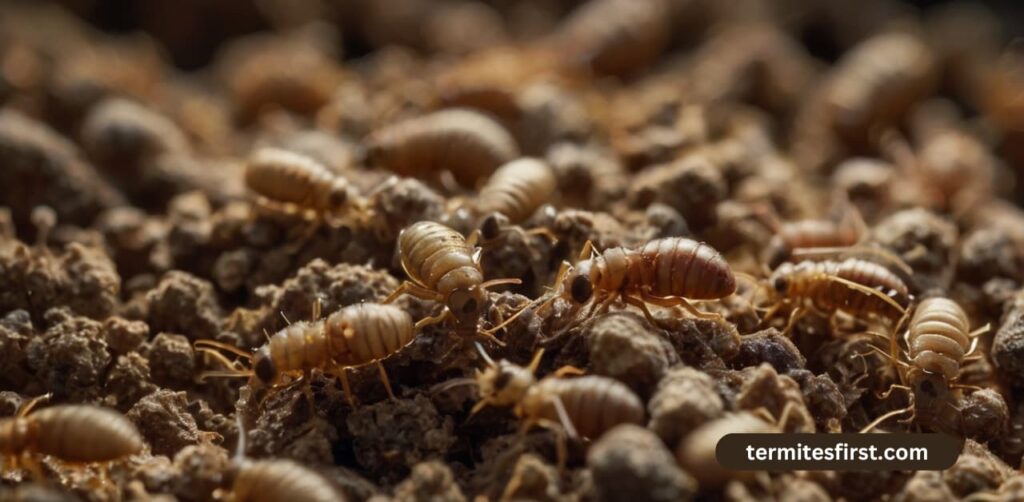
Additional Residues to Check
Whenever I consider ways to detect termite activity, I don’t solely concentrate on their feces. There are other signs to look for that can help you detect these unwanted visitors. Perhaps the most obvious sign, though, is the sight of swarms of winged termites.
These swarms typically indicate the formation of a new colony. Winged termites, known as alates, depart their original colony to establish new ones, a process that’s often obvious. If they are seen, it is a sure indication of a developing infestation in close proximity.
Subterranean termites, in particular, thrive in areas that are warm and moist. This is because they tend to swarm in concealed areas, like around the base of leaking pipes or in other difficult-to-reach parts of a house. This makes them difficult to catch early on.
Subterranean termites are one of the most costly dangers to your home. They tunnel underground and through your home’s structural wood, doing even more damage than carpenter ants. Unfortunately, it’s estimated that as many as 60% of homes in the United States will experience a termite attack at some stage in their life.
This makes termites the most prevalent pest threat to homeowners. One other thing I look for is the difference in behavior between ants and termites. Ants will most often establish a colony and stay put.
Frass Outside the Nest
You can often see their droppings, called frass, outside the nest. Termites deposit their frass in or near their colony. Making this distinction can be key in deciding if you’re looking at ants or termites.
Drywood termites droppings directly in their nests. You may typically find these droppings inside wooden structures or behind walls. You may be able to find these droppings easily, recognizable as miniature, hexagonal-shaped pellets.
Termites force them out of the wood through their kick-out holes. Check for small openings in the timber! These holes indicate where termites have exited, leaving behind an obvious sign of their presence.
Finding these types of holes can be crucial in detecting a termite colonization before it does major damage. In my experience, understanding these signs and differentiating between termites and other pests like ants is vital in addressing potential infestations effectively.
Each sign provides important information about an infestation. Swarms of winged termites and the presence of frass are important signs to look for to determine whether they’re present and how bad the infestation is.
As a homeowner, by knowing what to look for, you can act quickly to save your home from these damaging pests.
Conclusion
It was there that I learned a thing or two about termite poop, and what it can reveal about an infestation. By knowing what droppings to look for, you can identify these pests before they start causing serious damage. Small, round, hard pellets, often discovered in piles near damaged wood, indicate their presence. Understanding the various looks between species helps in recognizing them. The sooner you catch droppings, the sooner you can act to fix the problem and avoid any serious damage.
Smart managementRegular inspections and physical barriers help prevent termites from taking over your property. Keep in mind that other indications such as mud tubes and hollow sounding wood can indicate the presence of termites as well. As always, stay alert and take action.
By taking swift action today, we’re saving both our homes and our peace of mind. To learn more about identifying termites and preventing them, check out our other resources.
Frequently Asked Questions
Termite poop, or drywood termite droppings, appears as small wood-colored pellets, often resembling tiny piles of sawdust. Detecting these visible droppings can indicate you have an active termite infestation.
Look for tiny, hexagonal drywood termite pellets that resemble grains of sand or salt. These termite droppings are typically light brown to tan in color and are usually found near a termite entry point or wooden structure.
No, different termite species produce different droppings. Drywood termite pellets are unique, while subterranean termites incorporate their excretions into tunnels, making their droppings less readily visible.
Dry wood termite droppings, or frass, can typically be found next to wooden structures, along baseboards, or in windowsills, often accumulating in attics, basements, or crawl spaces.
Routine inspections and the help of professional pest control services are essential to prevent drywood termite infestations. Seal entry points and reduce moisture around your home to keep dry wood termites out, as treated wood can help prevent an infestation.
Look for mud tubes, chewed wood, or drywood termite droppings, as well as shed wings. Other signs of wood termites include hollow-sounding wood and clicking noises from inside walls, making early detection crucial.
